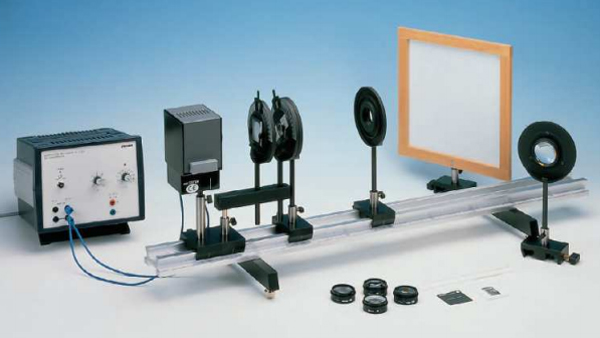Laws of lenses and optical instruments

The focal lengths of unknown lenses are determined by measuring the distances of image and object and by Bessel’s method. Simple optical instruments are then constructed with these lenses.
Lens holder
Condenser holder
Lens, mounted, f +20 mm
Lens, mounted, f +50 mm
Lens, mounted, f +100 mm
Lens, mounted, f +300 mm
Lens, mounted, f -50 mm
Lens, mounted, f -200 mm
Screen, translucent, 250×250 mm
Screen, with arrow slit
Ground glass screen,50x50x2 mm
Double condenser, f = 6 cm
Swinging arm
Optical bench expert, l = 1000 mm
Base for optical bench expert, adjustable
Slide mount for optical bench expert, h = 30 mm
Slide mount for optical bench expert, h = 80 mm
Ruler, plastic, 200 mm
Potential probe
Experiment lamp 5, with stem
Object micrometer 1 mm in 100 parts
Slide -Emperor Maximilian-
Ctenocephalus, microscopic slide
Connecting cord, 32 A, 500 mm, blue
PHYWE power supply, 230 V, DC: 0…12 V, 2 A / AC: 6 V, 12 V, 5 A
- To determine the focal length of two unknown convex lenses by measuring the distances of image and object.
- To determine the focal length of a convex lens and of a combination of a convex and a concave lens using Bessel’s method.
- To construct the following optical instruments:
a) Slide projector; image scale to be determined
b) Microscope; magnification to be determined
c) Kepler-type telescope
d) Galileo’s telescope (opera glasses).
- understand a basic optical component: the lens
- learn how common optical instruments work
- geometric optics in a nutshell
